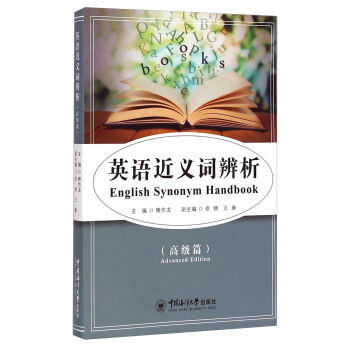财务会计
作者: carl s.warren 毕晓方
出版时间:2007-04-26
出版社:高等教育出版社
- 高等教育出版社
- 9787040162219
- 1
- 248426
- 平装
- 16开
- 2007-04-26
- 900
- 471
1. Introduction to Accounting and Business
Nature of a Business
Types of Businesses
Types of Business Organizations
Business Strategies
Value Chain of a Business
Business Stakeholders
The Role of Accounting in Business
Business Ethics
Profession of Accounting
Private Accounting
Public Accounting
Specialized Accounting Fields
Generally Accepted Accounting Principles
Business Entity Concept
The Cost Concept
Assets, Liabilities, and Owner's Equity
Business Transactions and the Accounting Equation
Financial Statements
Income Statement
Statement of Owner's Equity
Balance Sheet
Statement of Cash Flows
Financial Analysis and Interpretation
2. Analyzing Transactions
Usefulness of an Account
Characteristics of an Account
Analyzing and Summarizing Transactions in Accounts
Transactions and Balance Sheet Accounts
Income Statement Accounts
Withdrawals by the Owner
Normal Balances of Accounts
Illustration of Analyzing and Summarizing Transactions Trial Balance
Discovery and Correction of Errors
Discovery of Errors
Correction of Errors
Financial Analysis and Interpretation
3. The Matching Concept and the Adjusting Process
The Matching Concept
Nature of the Adjusting Process
Recording Adjusting Entries
Deferred Expenses (Prepaid Expenses)
Deferred Revenue (Unearned Revenue)
Accrued Expenses (Accrued Liabilities)
Accrued Revenues (Accrued Assets)
Fixed Assets
Summary of Adjustment Process
Financial Analysis and Interpretation
4. Completing the Accounting Cycle
Accounting Cycle
Work Sheet
Unadjusted Trial Balance Columns
Adjustments Columns
Adjusted Trial Balance Columns
Income Statement and Balance Sheet Columns
Financial Statements
Income Statement
Statement of Owner's Equity
Balance Sheet
Adjusting and Closing Entries
Journalizing and Posting Closing Entries
Post-Closing Trial Balance
Fiscal Year
Financial Analysis and Interpretation
Appendix: Reversing Entries
5. Accounting Systems and Internal Controls
Basic Accounting Systems
Internal Control
Objectives of Internal Control
Elements of Internal Control
Manual Accounting Systems
Subsidiary Ledgers
Special Journals
Manual Accounting System: The Revenue and Collection Cycle
Manual Accounting System: The Purchase and Payment Cycle
Adapting Manual Accounting Systems
Additional Subsidiary Ledgers
Modified Special Journals
E-Commerce
6. Accounting for Merchandising Businesses
Nature of Merchandising Businesses
Financial Statements for a Merchandising Business
Multiple-Step Income Statement
Single-Step Income Statement
Statement of Owner's Equity
Balance Sheet
Sales Transactions
Cash Sales
Sales on Account
Sales Discounts
Sales Returns and Allowances
Purchase Transactions
Purchases Discounts
Purchases Returns and Allowances
Transportation Costs, Sales Taxes, and Trade Discounts
Transportations Costs
Sales Taxes
Trade Discounts
Illustration of Accounting for Merchandise Transactions
Chart of Accounts for a Merchandising Business
The Accounting Cycle for a Merchandising Business
Merchandise Inventory Shrinkage
Work Sheet
Closing Entries
Financial Analysis and Interpretation
Manual Accounting System
7. Cash
Nature of Cash and the Importance of Controls Over Cash
Control of Cash Receipts
Controlling Cash Received from Cash Sales
Controlling Cash Received in the Mail
Internal Control of Cash Payments
Basic Features of the Voucher System
Bank Accounts: Their Nature and Use as a Control Over Cash
Business Bank Accounts
Bank Statement
Bank Accounts as a Control Over Cash
Bank Reconciliation
Petty Cash
Presentation of Cash on the Balance Sheet
Financial Analysis and Interpretation
8. Receivables
Classification of Receivables
Accounts Receivable
Notes Receivable
Other Receivables
Internal Control of Receivables
Uncollectible Receivables
Allowance Method of Accounting for Uncollectibles
Write-offs to the Allowance Account
Estimating Uncollectibles
Direct Write-Off Method of Accounting for Uncollectibles
Characteristics of Notes Receivable
Due Date
Interest
Maturity Value
Accounting for Notes Receivable
Receivables on the Balance Sheet
Financial Analysis and Interpretation
Appendix: Discounting Notes Receivable
9. Inventories
Internal Control of Inventories
Effect of Inventory Errors on Financial Statements
Inventory Cost Flow Assumptions
Inventory Costing Methods Under a Perpetual Inventory System
First-In, First-Out Method
Last-In, First-Out Method
Average Cost Method
Computerized Perpetual Inventory Systems
Inventory Costing Methods Under a Periodic Inventory System
First-In, First-Out Method
Last-In, First-Out Method
Average Cost Method
Comparing Inventory Costing Methods
Use of the First-In, First-Out Method
Use of the Last-In, First-Out Method
Use of the Average Cost Method
Valuation of Inventory at Other than Cost
Valuation at Lower of Cost or Market
Valuation at Net Realizable Value
Presenting Merchandise Inventory on the Balance Sheet
Estimating Inventory Cost
Retail Method of Inventory Costing
Gross Profit Method of Estimating Inventories
Financial Analysis and Interpretation
10. Fixed Assets and Intangible Assets
Nature of Fixed Assets
Classifying Costs
The Cost of Fixed Assets
Donated Assets
Nature of Depreciation
Accounting for Depreciation
Straight-Line Method
Units-of-Production Method
Declining-Balance Method
Comparing Depreciation Methods
Depreciation for Federal Income Tax
Revising Depreciation Estimates
Composite-Rate Method
Capital and Revenue Expenditures
Stages of Acquiring Fixed Assets
Fixed Asset Components
Disposal of Fixed Assets
Discarding Fixed Assets
Selling Fixed Assets
Exchanging Similar Fixed Assets
Leasing Fixed Assets
Internal Control of Fixed Assets
Natural Resources
Intangible Assets
Patents
Copyrights and Trademarks
Goodwill
Financial Reporting for Fixed Assets and Intangible Assets
Financial Analysis and Interpretation
Appendix: Sum-of-the-Years-Digits Depreciation
11. Current Liabilities
The Nature of Current Liabilities
Short-Term Notes Payable and Current Portion of Long-Term Debt
Short-Term Notes Payable
Current Portion of Long-Term Debt
Contingent Liabilities
Payroll and Payroll Taxes
Liability for Employee Earnings
Computing Employee Net Pay
Employees' Fringe Benefits
Pensions
Postretirement Benefits Other Than Pensions
Financial Analysis and Interpretation
12. Corporations: Organization, Capital Stock Transactions, and Dividends
Nature of a Corporation
Characteristics of a Corporation
Forming a Corporation
Stockholders' Equity
Sources of Paid-in Capital
Stock
Issuing Stock
Premium on Stock
Treasury Stock Transactions
Stock Splits
Accounting for Dividends
Cash Dividends
Stock Dividends
Reporting Stockholders' Equity
Stockholders' Equity in the Balance Sheet
Reporting Retained Earnings
Financial Analysis and Interpretation
13. Accounting for Partnerships and Limited Liability Corporations
Alternate Forms of Business Entities
Proprietorships
Corporations
Partnerships
Limited Liability Corporations
Comparison of Alternate Entity Characteristics
Equity Reporting for Alternate Entity Forms
Equity Reporting for Proprietorships
Equity Reporting for Corporations
Equity Reporting for Partnerships and Limited Liability Corporations
Accounting for Partnerships and Limited Liability Corporations
Forming a Partnership
Dividing Income
Dividing Income-Services of Partners
Dividing Income-Services of Partners and Investments
Dividing Income-Allowances Exceed Net Income
Partnership Dissolution
Admitting a Partner
Withdrawal of a Partner
Death of a Partner
Liquidating Partnerships
Gain on Realization
Loss on Realization
Loss on Realization-Capital Deficiency
Errors in Liquidation
Business Life Cycle
14. Income Taxes, Unusual Income Items, and Investments in Stocks
Corporate Income Taxes
Payment of Income Taxes
Allocating Income Taxes
Reporting and Analyzing Taxes
Unusual Items Affecting the Income Statement
Unusual Items Affecting Income from Continuing Operations
Unusual Items Not Affecting Income from Continuing Operations
Reporting Unusual Below-the-Line Items
Earnings per Common Share
Comprehensive Income
Accounting for Investments in Stocks
Short-Term Investments in Stocks
Long-Term Investments in Stocks
Sale of Investments in Stocks
Business Combinations
Mergers and Consolidations
Parent and Subsidiary Corporations
Consolidated Financial Statements
Financial Analysis and Interpretation
15. Bonds Payable and Investments in Bonds
Financing Corporations
Characteristics of Bonds Payable
The Present-Value Concept and Bonds Payable
Present Value of the Face Amount of Bonds
Present Value of the Periodic Bond Interest Payments
Accounting for Bonds Payable
Bonds Issued at Face Amount
Bonds Issued at a Discount
Amortizing a Bond Discount
Bonds Issued at a Premium
Amortizing a Bond Premium
Zero-Coupon Bonds
Bond Sinking Funds
Bond Redemption
Investments in Bonds
Accounting for Bond Investments-Purchase,Interest, and Amortization
Accounting for Bond Investments-Sale
Corporation Balance Sheet
Balance Sheet Presentation of Bonds Payable
Balance Sheet Presentation of Bond Investments
Financial Analysis and Interpretation
Appendix: Effective Interest Rate Method of Amortization
Amortization of Discount by the Interest Method
Amortization of Premium by the Interest Method
16. Statement of Cash Flows
Reporting Cash Flows
Cash Flows from Operating Activities
Cash Flows from Investing Activities
Cash Flows from Financing Activities
Noncash Investing and Financing Activities
No Cash Flow per Share
Statement of Cash Flows-The Indirect Method
Retained Earnings
Common Stock
Bonds Payable
Building
Land
Preparing the Statement of Cash Flows
Statement of Cash Flows-The Direct Method
Cash Received from Customers
Cash Payments for Merchandise
Cash Payments for Operating Expenses
Gain on Sale of Land
Interest Expense
Cash Payments for Income Taxes
Reporting Cash Flows from Operating Activities-Direct Method
Financial Analysis and Interpretation
17. Financial Statement Analysis
Basic Analytical Procedures
Horizontal Analysis
Vertical Analysis
Common-Size Statements
Other Analytical Measures
Solvency Analysis
Current Position Analysis
Accounts Receivable Analysis
Inventory Analysis
Ratio of Fixed Assets to Long-Term Liabilities
Ratio of Liabilities to Stockholders' Equity
Number of Times Interest Charges Earned
Profitability Analysis
Ratio of Net Sales to Assets
Rate Earned on Total Assets
Rate Earned on Stockholders' Equity
Rate Earned on Common Stockholders' Equity
Earnings per Share on Common Stock
Price-Earnings Ratio
Dividends per Share and Dividend Yield
Summary of Analytical Measures
Corporate Annual Reports
Management Discussion and Analysis
Independent Auditors' Report






